See(d)ing the Change:
‘V.1’ Explained
& An Invitation to Delectable, Adaptable Diversity!
How do we be and sow the change we wish to see(d) in the world?
Together, we’re cultivating diversity in our gardens, ourselves & our world…
…and perhaps you’ve noticed that ‘v.1’ popping up in our variety names…
What’s the story?
There’s so much to share & here’s the nutshell:
“Versions”( v.1 is “version 1”) are Fruition originals that have more variation in them than a typical commercialized variety. They are dynamic iterations of diversity we are growing-and-adapting with over the years. (It’s a new name for a phenomenon that’s truly not-so-new – learn more below!) For example, when you get to know Mermaid’s Tale Cabbage v.1 you may witness a spectrum of light lime to emerald heads with lilac-lavender to rich burgundy veins, and some with sharper conical shapes than others. And we hope some day you’ll get to meet v.2, v.3, or v.17 and appreciate the distinctiveness of each iteration like a different vintage of the same wine. May growing with these seeds encourage us to be “See(d)ing the Change” we seek in the world, stoking our collective remembering-imagining of all the ways that diversity is the foundation of the adaptability we need to thrive, for generations to come!
The irony of “varieties”
Consider this, friends: varieties sold in the last hundred years have generally been pressured into expectations of, well – not having much variety within them!
We can’t overestimate the role of agricultural industrialization in crafting this irony, constraining many of our imaginations to expect so-called varieties to conform to being uniform and stable. (“Uniform” meaning the same across one generation of plants, and “stable,” or “fixed,” as in consistent from one plant generation to the next).
Simply put, these qualities are easiest to profit from – they lend themselves to scaling up and privatizing seed through regulation. Though it’s true, lots of folks have had plenty of reasons over millennia for keeping particular selections of cultivated plants in uniform and stable ways, and there’s many such varieties new and old that we love and are still sharing!
Messy morals of modern breeding myths
When it comes to stories about new varieties and how they come to be, many tales of plant breeding in the last century celebrate individual breeders as hero-inventors. Such myths often obscure so much: both the intergenerational, Indigenous relationship realities of seeds, and the colonial harms intertwined with so many seed stories too. Plus! Language normalized in such plant breeding spaces generally reinforces eugenics concepts (that some lifeforms are inherently better than others –“elite genes”, “superior varieties”). Alas, such ideas underpin many forms of oppression in the world today. Our stomachs now turn hearing many stories of new varieties (some of our own included), as their underlying lessons feel linked to threats to various beloved beings – plant, human, and beyond.
“Versions” voila!
As we’re unlearning and reckoning with all the ways monoculture culture and eugenics thinking has affected us, we’re joyfully sharing a particular shape of diversity that we love, disregarding the uniform-and-stable, variety-invention expectations. We’re calling them “versions” (shown on our packets with a “v.” followed by the version number).
Versions have more variety in them than your average variety. And versions lean into the fact that, like all life on this planet, they’re always in motion. Feast your senses on these marvelous, momentary, kaleidoscopic expressions of our dynamic co-adapting dance with plants!
Over the years we hope to share several versions of the same-named plant, as the plant population’s characteristics shift significantly. Though it may take a few years/generations from one “version” to the next, you may soon be meeting Mermaid’s Tale Cabbage v.2 or v.3, and oh we hope you do!
You can think of each version of a single same-named plant like a different art piece in the same series, or different harmonies of the same song. In these series of seedworks of art, each version will have common characteristics and themes shared with the others, while also being an expression that in some way does its own thing.
So what does diversity in a See(d)ing the Change version look like?
Take Mermaid’s Tale cabbage as an example. Although “versions” have more diversity in them than typical commercialized varieties, it’s not a total grab bag. Over several seasons we’ve chosen to keep seeds from plants with qualities that are not inherently better than other plants, but that those of us involved in growing with Mermaid’s Tale have fallen in love with (mixes of purple+green, dense heads for storage). And of course we’ve selected what’s been delicious to us (delicio*us*?), though as they say there’s no accounting for taste!
After you sow Mermaid’s Tale cabbage, a vivid spectrum of light lime to emerald heads will grow, each leaf veined lilac-lavender to rich burgundy, each one a kaleidoscope of color. Diversity unfolds as their conical shape may be sharp or subtle with mild, bright flavor and crisp-tender texture. A cross between Kalibos and Caraflex, an early green cone-headed hybrid cabbage, Mermaid’s Tale matures quickly though not all at once, ideal for moving beyond the industrial plant expectations of modernity.
Delectable, dependable diversity, indeed!
Can I save seeds from See(d)ing the Change versions?
We ‘save’ all of Fruition’s See(d)ing the Change seeds (who’s saving who?!!) and Friends, you can, too. We hope you do!
So can our collective great-great-great grandchildren, too.
We share an abundance of seed saving resources on our website, dig in!
With Fruition’s See(d)ing the Change seeds, you may see for yourself the shifting shapes of diversity in the next generation, particularly shaped by the plants you save seed from.
Together, we are sowing the world we dream of, where deliciousness and diversity are embraced, amplifying the beauty and abundance that is resistance as well as adaptive resilience.
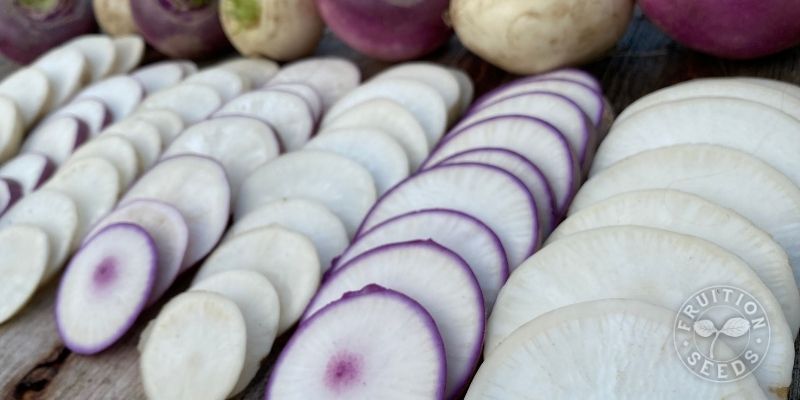
Invitations, not inventions
Make no mistake, “diversity” comes in many shapes and dimensions, and in the grand scheme of seeds, what we’re calling versions is nothing new. We’ve neither invented the diversity itself nor the idea of sharing this shape of diversity. (Besides, even some familiar varieties we tend to think of as uniform, like Buttercup and Butternut squash, have in reality often expressed diversity within them too!) Grexes, “landraces,” and breeding populations are all related concepts… and we hope that for now “versions” is a relatable name for these iterations we are sharing with our community.
Rather than inventing, we are simply *inviting* – inviting you to grow in these (and all!) the ways with us. Inviting you to join us in the joy of growing with plants that so vividly remind us that like each of us, they are each unique never-before-seen or savored beings.
Versions are an invitation to join us in real-izing that everything is community and relationship is everything. To be inspired to collectively end requirements of uniform-and-stable varieties that have been weaponized (enabled largely by the U.S. government!) to criminalize peasant and Indigenous farmers saving seeds around the planet. #StopUPOV. This is your invitation to sow an understanding that diversity is the foundation of adaptability.
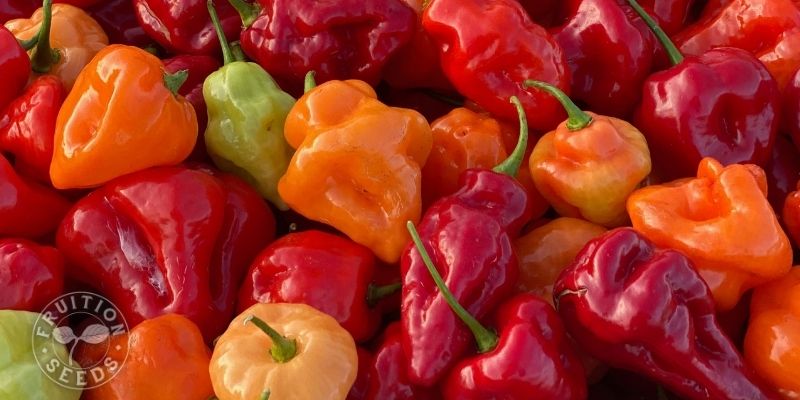
“All that you touch you Change. All that you Change changes you.
The Only Lasting Truth is Change.”
~Parable of the Sower (by Octavia Butler)
See(d)ing the Change for yourself:
Here you are, Friends! These plants are our teachers, mentors, friends and family. May you both grow and thrive in each other’s company for seasons and generations to come:
Organic Mermaid’s Tale Cabbage v.1
Organic Medicinal Chamomile Mix v.1
Organic Unexpected Revelations Baby & Popcorn v.1
Organic Hope is a Verb Dahlia v.1 *Seeds
Organic Aha! Picante Hot Pepper v.1
Organic Aha! 80/20 Sweet/Spicy Pepper v.1
Organic They Might Be Giants Sunflower v.1
Organic Finger Lakes Long Paste Tomato v.1
Organic Finger Lakes Round Paste Tomato v.1
We’ve Only Just Begun! And thanks for joining us on the journey <3
Organic Mermaid’s Tale Cabbage
Scrumptiously mentioned above, Mermaid’s Tale v.1 is the third generation of the cross with many, many more to come! Each head of Mermaid’s Tale, like each of us, is a unique expression of deliciously never-before-seen cabbage! Savor a vivid spectrum of light lime to emerald heads, each leaf veined lilac-lavender to rich burgundy, each one a kaleidoscope of color. “This is simply the most magical cabbage I’ve ever seen,” said Angela. Diversity unfolds as their conical shape may be sharp or subtle with mild, bright flavor and crisp-tender texture.
For the full story, hop on over to our blog, Cabbage Re-Imagined: Remembering Our Food, Re-Imagining Ourselves.
Medicinal Chamomile Mix
We love the floral flavors and sweet aroma of chamomile, so deeply medicinal and so easy to grow. After growing several varieties specifically selected for higher concentrations of essential oils and medicinal compounds, we let our favorites naturally cross-pollinate in our gardens to create this Medicinal Chamomile Mix! Savor a spectrum of delectably medicinal chamomile: Some plants have larger flowers, some are more sweet and others are more tall. They all will thrive in gardens as well as raised beds and containers. More than other plants, chamomile tends to thrive with neglect even in poor and compacted soil, so long as they establish. We are delighted to watch chamomile naturalize in our orchard and permaculture-style perennial gardens, where they readily re-seed themselves season after season.
Organic Unexpected Revelations Baby & Popcorn
Scrumptious baby corn as well as spectacular popcorn, if you’ve never grown your own baby corn or popcorn, get ready: nothing you can buy will prepare you for the deliciousness or joy of growing your own Unexpected Revelations!
We often harvest 8 to 12 ears of lusciously tender and sweet baby corn (utterly unexpected and such a revelation compared to anything frozen or in can, hence the name…!) and if we miss their baby corn stage, each ear matures into gorgeous popcorn, easily maturing even in short seasons.
Organic Hope is a Verb Dahlia
Each plant of Hope is a Verb dahlia, like each of us, is a unique, never-before-seen expression in a spectrum of lemon, cream, tangerine, crimson and plum blossoms on dwarf to semi-dwarf plants. We share both tubers and seeds of Hope is a Verb and if ebullient diversity is what you’re after, sow the seeds: Dahlias are octoploids with 8 sets of homologous chromosomes (humxns only have 2!) and the resulting permutations are endless as well as extraordinary.
What’s in a name? Not a passive act, cultivating hope and growing dahlias are crucial in these times — and not always easy — and we are here beside you in all the ways & seasons, Friends!
Organic Aha! Picante Hot Pepper
A kissing cousin of habanero, savor a spectrum of glossy, searing hot crimson and tangerine fruits in glorious sizes and shapes from sleek, tapered habanero-style to ribbed round beauties to flying saucers and beyond! If you love hot peppers, brilliant colors, diversity and delectable surprises as well as easter egg hunting, Aha! Picante will delight you all summer long, maturing quickly even in cool, short seasons.
Aha! peppers are a cross between Habanada and Aji Dulce — two brilliantly tropical, citrusy-sweet peppers — Aha, get it?!! — and Friends, we learned (the hilariously hard way!) that though heat is the dominant trait of peppers, the genes affecting heat may be either ‘turned off’ or turned so far ‘down’ as to taste sweet. Turned off, the next generation is sweet; turned down, the gene is still ‘on’ and thus the next generation is, frankly, flaming hot. Long story short (and we can’t wait to share more!), what began as a ‘sweet pepper project’ has turned into three distinct peppers: one hot, one not and one that is, well, quite the combination. Organic Aha! 80/20 Sweet & Spicy is that combination, it’s true ~
Organic Aha! 80/20 Sweet/Hot Pepper
Not for the lilly-livered, Aha! 80/20 is a delectable spectrum of glossy crimson and tangerine fruits, 80% sweet and 20% spicy, a fabulous menagerie of sizes and shapes from sleek, tapered fruits to ribbed, round beauties to flying saucers and beyond.
If you love both sweet and hot peppers as well as adventures, brilliant colors and diversity, Aha! 80/20 Sweet & Spicy will delight you all summer long.
The million dollar question: How to tell if a pepper is spicy or sweet? Find a toothpick and enjoy our video!
Organic They Might Be Giants Sunflower
Imagine all the massive sunflowers, bright and swaying in the breeze, towering over our heads!
We sowed an impressive collection of giant sunflower varieties and, instead of choosing one to share, we let them all cross and to bring even more glorious diversity to you!
The name ‘They Might Be Giants’ is both an homage to a band we’re fond of (!) as well as perhaps an understatement: Friends, these sunflowers will most assuredly dwarf everything around them, lol ~
Organic Finger Lakes Long Paste Tomato
Savor a spectrum of San Marzano-style fruits, some more plump and others more large (still others with tapered tops!) combining rich flavor and dense flesh with very few seeds perfect for salsa and sauce as well as salads.
A cross between 10 Fingers of Naples and round tomato from Cornell resistant to early and late blight as well as septoria leaf spot (cu 79), Finger Lakes Long Paste matures quickly even in cool, short seasons and…
is a delicious bridge moving beyond the industrial plant expectations of our time.
Organic Finger Lakes Round Paste Tomato
Savor a spherical spectrum of sizes from large cherry to small slicer, combining rich flavor and dense flesh with very few seeds perfect for sundried tomatoes, salsa and sauce as well as salads.
A cross between 10 Fingers of Naples and round tomato from Cornell resistant to early and late blight as well as septoria leaf spot (cu 79), Finger Lakes Round Paste matures quickly even in cool, short seasons and is a delicious bridge moving beyond the industrial plant expectations of our time.
Organic Plum in Tokyo Salad Turnip
Juicy sweet and marvelously mild, Plum in Tokyo is not your average turnip! Delectably tender and scrumptious in salads, about 75% of Plum in Tokyo are bright ivory with 25% beaming brilliant violet.
No matter the skin color, each creamy white root melts in your mouth and, so magically, the purple roots often burst with burgundy at the center.
We love to harvest Plum in Tokyo between the size of a golf ball and a baseball, especially in the cool of spring and fall when they are lusciously tender and sweet. We savor Plum in Tokyo raw in salads, tossed on the grill, oven-roasted as well as a fabulous snack right in the garden.
A cross between Scarlet Queen (an F1 red salad turnip) and Hakurei (the F1 white salad turnip of our time), Organic Plum in Tokyo turnips mature quickly even in cool, short seasons and is a delicious bridge moving beyond the industrial plant expectations of our time.
Organic Snow in Tokyo Salad Turnip
Juicy sweet and marvelously mild, Snow in Tokyo is not your average turnip!
Delectably tender and scrumptious in salads, we love to harvest Snow in Tokyo between the size of a golf ball and a baseball, so tender and sweet in the cool of spring and fall.
We savor Snow in Tokyo raw in salads, tossed on the grill, oven-roasted as well as a fabulous snack right in the garden.
We’ve Only Just Begun!
Thanks for joining us on the journey <3
Sow Seeds & Sing Songs,

& the whole Fruition crew

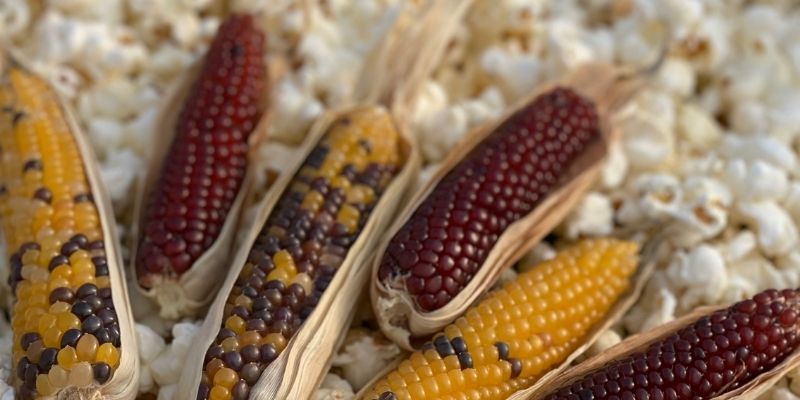
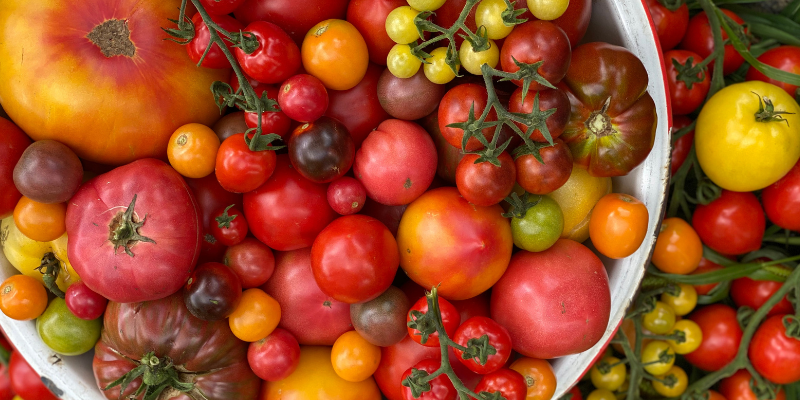
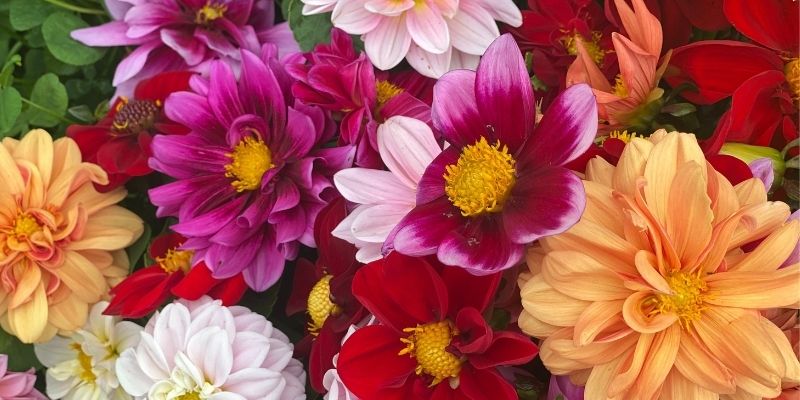
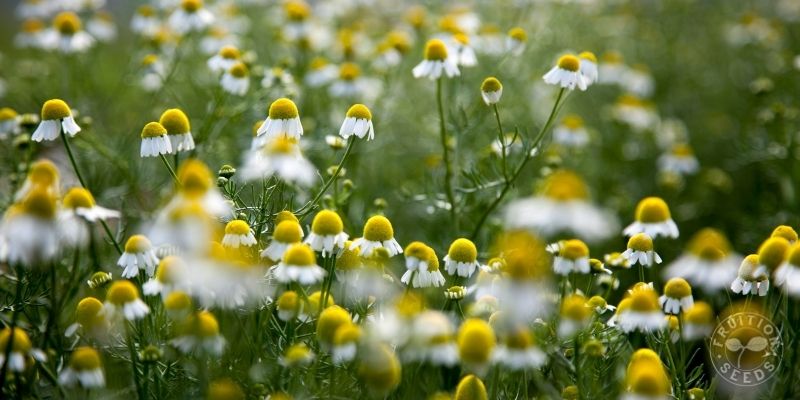
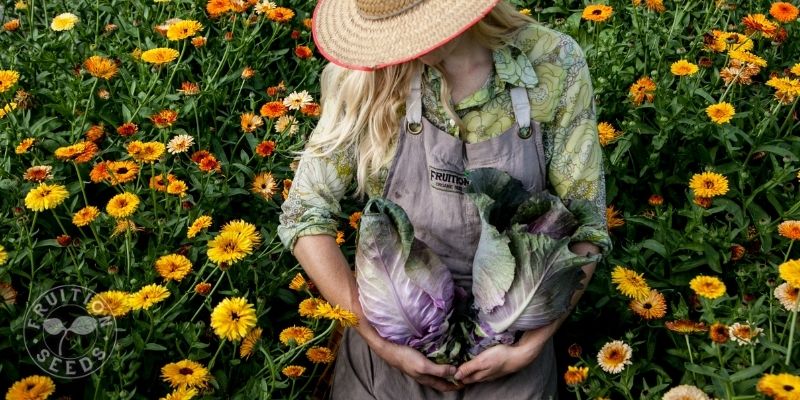
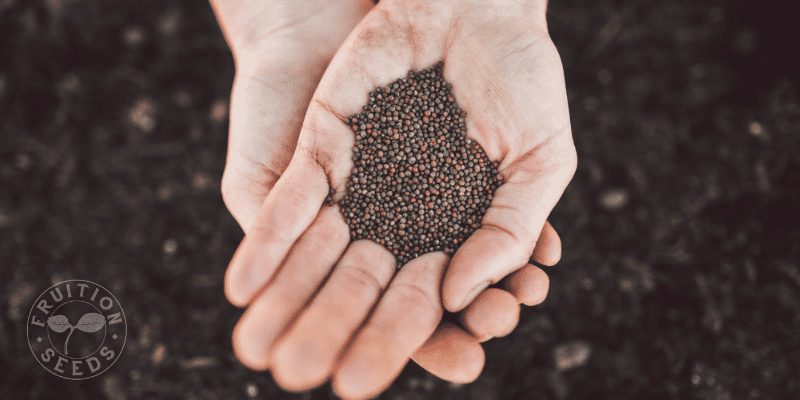
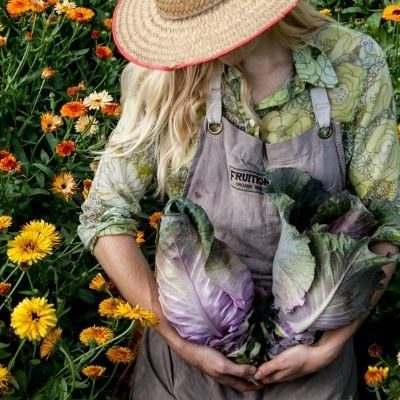
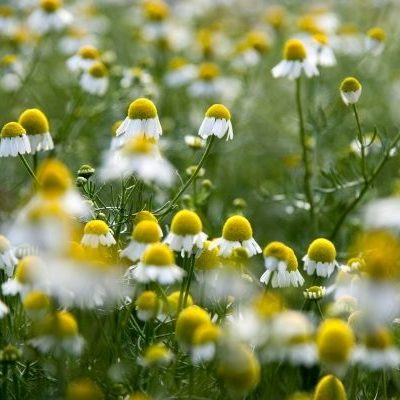
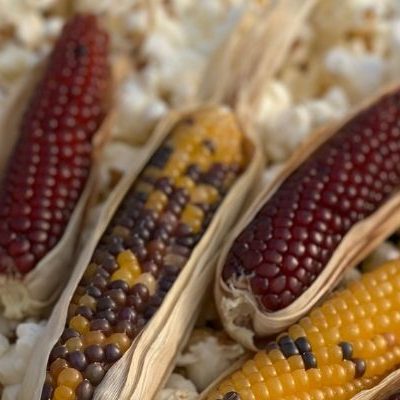
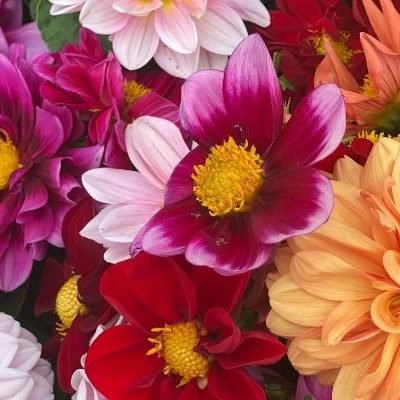
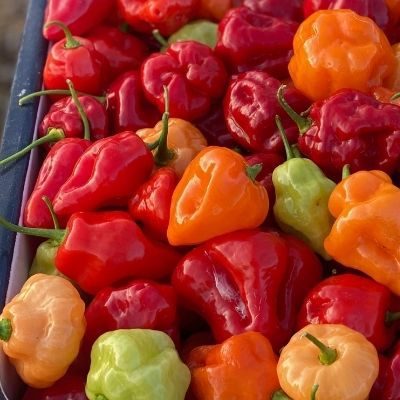
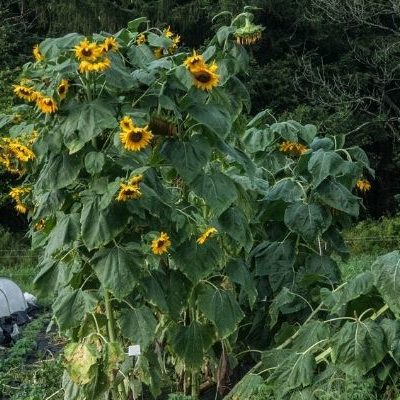
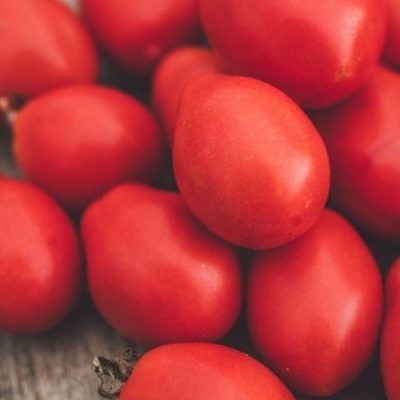
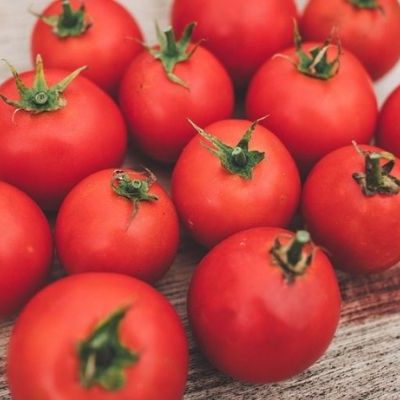
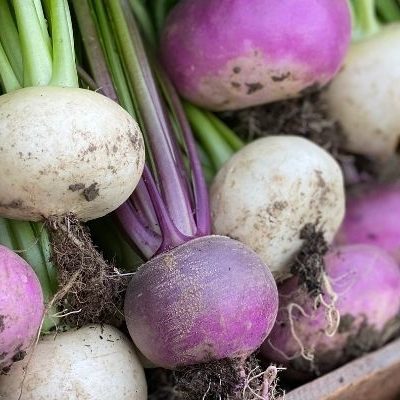
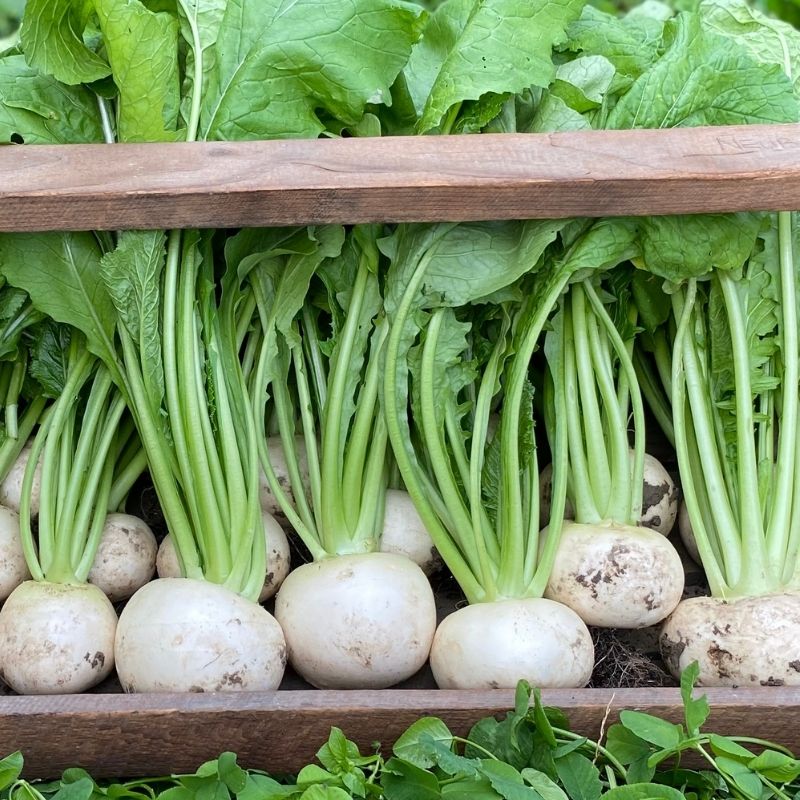
Love your blog and the spirit of your organization! My great-great grandfather farmed in Naples. I live many miles away but ordering seeds from your company gives me a feeling of connection with him.
Have you had a look at Joseph Lofthouse’s “Landrace Gardening” book?
Indeed, Joseph is a dear friend and inspiration!
I love your very human approach to seeds. I’m an Englishman living in France and as a newcomer to fruition seeds, wonder whether you ship to France. It doesn’t quite fit with living within our local community I know, but we can occasionally have visitors from abroad can’t we?
Hello Andrew, Thanks for being a part of our community. Unfortunately we are not able to ship outside of the U.S and Canada at this time.
Wishing you abundance in your garden this season. Melissa
I grew up in Honeoye NY and currently live in Sedona AZ.
I went to a fermentation festival last summer back home with family and friends and was introduced to the mermaid’s tail cabbage.
A few weeks ago I planted the whole package of seeds and practically all of them germinated ! I plan on getting them into the garden in a week or so. I’m so happy that I found you. Hopefully I’ll be making a lot of sauerkraut this year.
Thank you for all that you do.
Hi Pam, Thanks for sharing these kind words and for being a part of the Fruition community.<3<3<3 Melissa